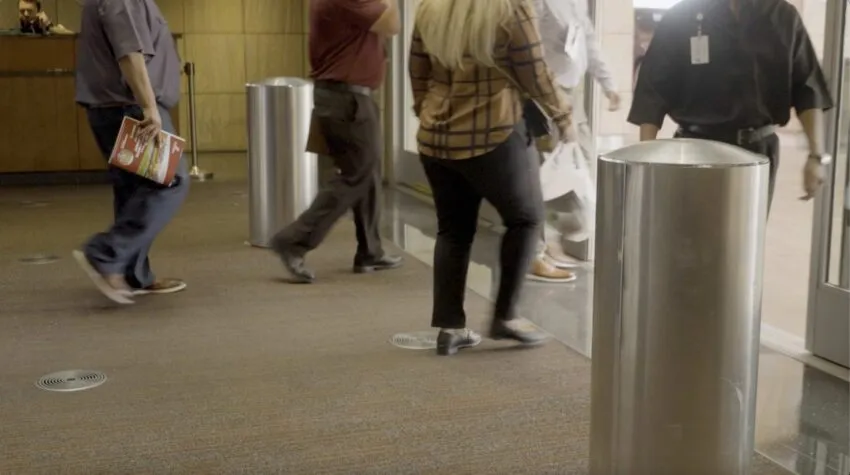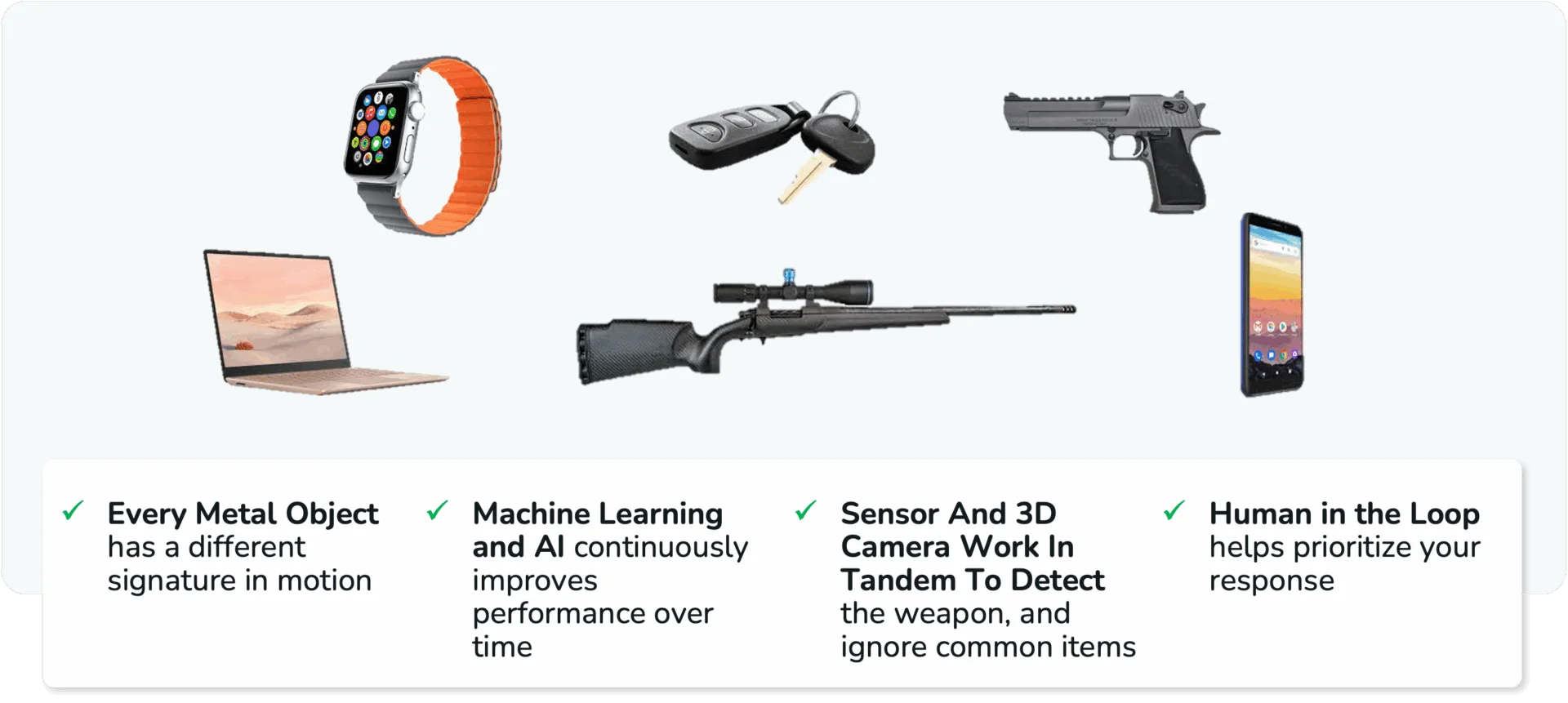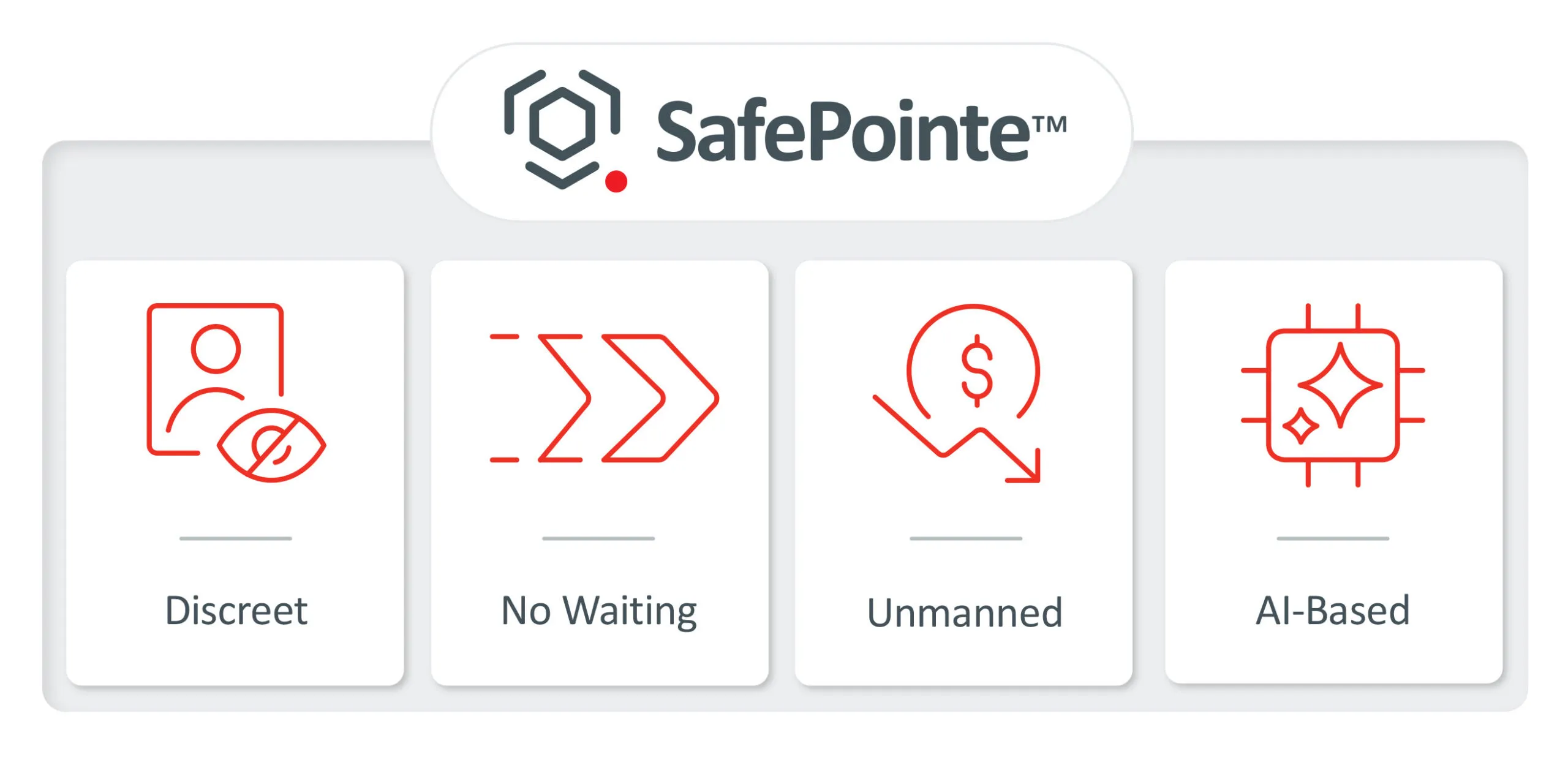Healthcare security professionals, grappling with the rising trend of workplace violence in healthcare, are facing the following challenges:
- With rising concerns about gun violence, provider safety and public safety is paramount. However, intrusive security measures like metal detectors can create unease for everyone who walks through, from a one-time visitor to nurses and doctors arriving for their shifts each day.
- While healthcare settings often have “no firearm” zones, it is challenging to identify visitors, patients, or staff who might be carrying weapons and pose a threat.
- Metal detectors and similar active systems pose risks to individuals with medical devices like pacemakers. Hospitals require weapons detection systems with passive sensors to avoid such health risks.
- Hospitals seek efficient public safety solutions that don’t strain budgets, especially as they aim to reduce non-provider expenses. Traditional security systems requiring multiple staff members can be costly.
- Frequent false alarms from security systems can deplete resources, cause panic, and divert attention from real threats. Many systems struggle to differentiate between everyday items and potential hazards.
- Long queues caused by metal detectors or similar security checks can disrupt hospital operations and affect visitor satisfaction.
- In events like active shooter situations, video footage is crucial for investigation, but many traditional security systems lack this feature, hindering post-event analysis.
For healthcare facilities grappling with the challenges of workplace violence, the best solution is an advanced weapons detection system that enhances security while maintaining a positive environment for patients and visitors.
In this post, we’ll delve into the capabilities of SafePointe™, a state-of-the-art weapons detection technology. We will explore how SafePointe addresses each pain point, from discreetly identifying armed individuals to reducing operational inefficiencies and supporting crisis management with innovative features.
Note: SoundThinking’s SafePointe™ weapons detection system was built to solve all the pain points listed above. You can read about it in detail below or reach out to our sales team to learn more about how it can help improve security operations at your casino, hospital, corporate location, or school.
Register For Our Upcoming Webinar
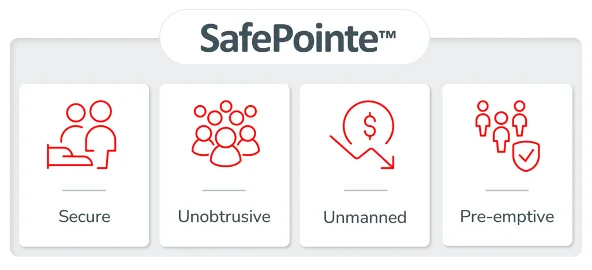
SafePointe Weapons Detection System
SafePointe is an innovative AI-based weapons detection system designed for unobtrusive, efficient screening in healthcare settings and beyond. It discreetly identifies individuals carrying weapons using advanced sensor technology, while minimizing false positives. SafePointe operates continuously, with a high throughput of up to 7200 patrons per hour per lane, and integrates passive sensors, ensuring safety for all, including those with medical devices. The system boasts a low total cost of ownership and, for some customers, requires no additional security staff, making it a cost-effective solution for enhancing security in healthcare facilities.
Key Feature #1:Covert Weapons Detection System Ensures Public Safety in Healthcare Settings Without Disrupting Patient Environment
In contrast to conventional metal detector systems, which are often prominent and can be unsettling in a healthcare environment, the SafePointe system is designed for discretion. It is typically installed as inconspicuous bollards or integrated into existing structures, ensuring it blends into the healthcare setting.

For example, in a busy hospital or clinic, patients and visitors can move freely without the anxiety-inducing visibility of traditional security systems. The covert nature of SafePointe ensures that while robust security measures are in place, they do not interfere with the patient’s experience or the overall environment of the healthcare setting.
Key Feature #2: Unmanned Operation Maintains Stringent Healthcare Safety Standards
SafePointe’s advanced sensor technology, known as Magnetic Moment, is pivotal in its cost-efficient, unmanned operation, making it ideal for tackling workplace violence in healthcare. This technology, equipped with sophisticated algorithms and an extensive database of weapon signatures, identifies the magnetic characteristics of objects to distinguish between potential threats and benign items. Its AI-driven methodology functions autonomously, eliminating the need for continuous human supervision at entry points, a common requirement in traditional security setups. Additionally, the system is enhanced with ‘human in the loop’ oversight from remote monitoring centers, ensuring a balance of technology and human judgment.
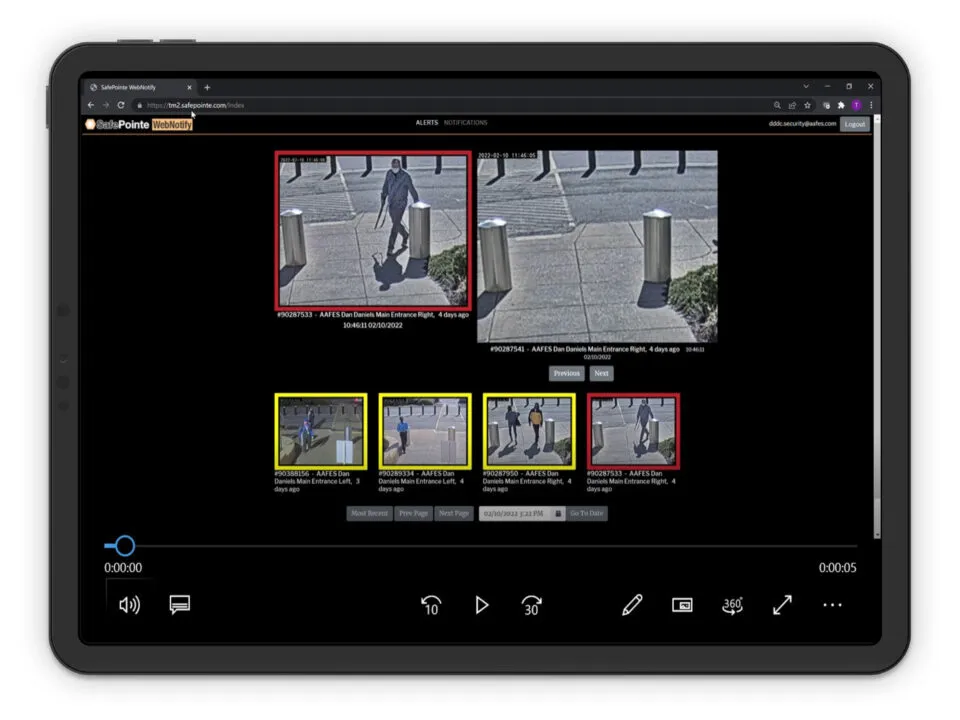
In healthcare environments, where security needs can fluctuate between peak and quieter times, traditional manned systems may not always provide consistent coverage. SafePointe, however, offers continuous, 24/7 monitoring and substantially helps improve your existing security layers. This is particularly crucial in healthcare settings, where the stakes are high and the well-being of patients and staff is paramount. The system’s autonomous operation not only upholds stringent healthcare safety standards but also offers peace of mind.
Key Feature #3: Health-Safe Passive Sensors Enhance Security Without Risking Patient Wellbeing
SafePointe’s Magnetic Moment sensors offer a passive alternative to active security measures such as metal detectors and other weapons detection systems. This passive characteristic ensures the well-being of individuals with medical devices like implants and pacemakers, along with pregnant women and children. The bollards’ inconspicuous design facilitates smooth passage for individuals in wheelchairs and gurneys, a feature notably absent in traditional metal detectors with their constraining, narrow pathways.
Furthermore, Magnetic Moment sensors stand out in their ability to precisely identify weapons on wheelchairs or gurneys, addressing the nationwide concern of weapons infiltrating ambulance bays. This distinctive capability distinguishes SafePointe from competitors like Evolv and other systems, which either lack the breadth to accommodate wheelchairs or gurneys or struggle to differentiate between these devices and potential threats. This differentiation heightens the risk of unauthorized weapons slipping through undetected.
Key Feature #4: Low Total Cost of Ownership Beneficial for Healthcare Budget Management
SafePointe’s economical Total Cost of Ownership (TCO) is particularly beneficial for healthcare facilities with strict budgetary constraints. Traditional metal detectors can be expensive, often requiring $10k or more per year plus staff salaries. In contrast, SafePointe’s cost-effectiveness is enhanced by its unmanned operation, reducing the need for additional personnel. SoundThinking further enhances this advantage by offering SafePointe on a flexible, subscription-based payment model, available in three- or five-year terms. This approach makes SafePointe a financially viable and technologically advanced solution for healthcare security.
Key Feature #5: Highly Accurate Detection Minimizes False Positives, Ensuring Healthcare Facility Safety
SafePointe’s AI-driven technology significantly minimizes false positives, a critical aspect for maintaining safety in healthcare facilities. Unlike traditional metal detectors that often have high false positive rates, SafePointe boasts a remarkably low incidence of false alarms. This accuracy is due to its extensive database of over 14 million weapon signatures and an AI/ML system that continuously learns and adapts. As threats evolve and new weapon types emerge, SafePointe updates its knowledge base, ensuring it stays ahead in threat detection. This ability to discern genuine threats from harmless items like personal belongings or medical equipment is essential in a healthcare setting.
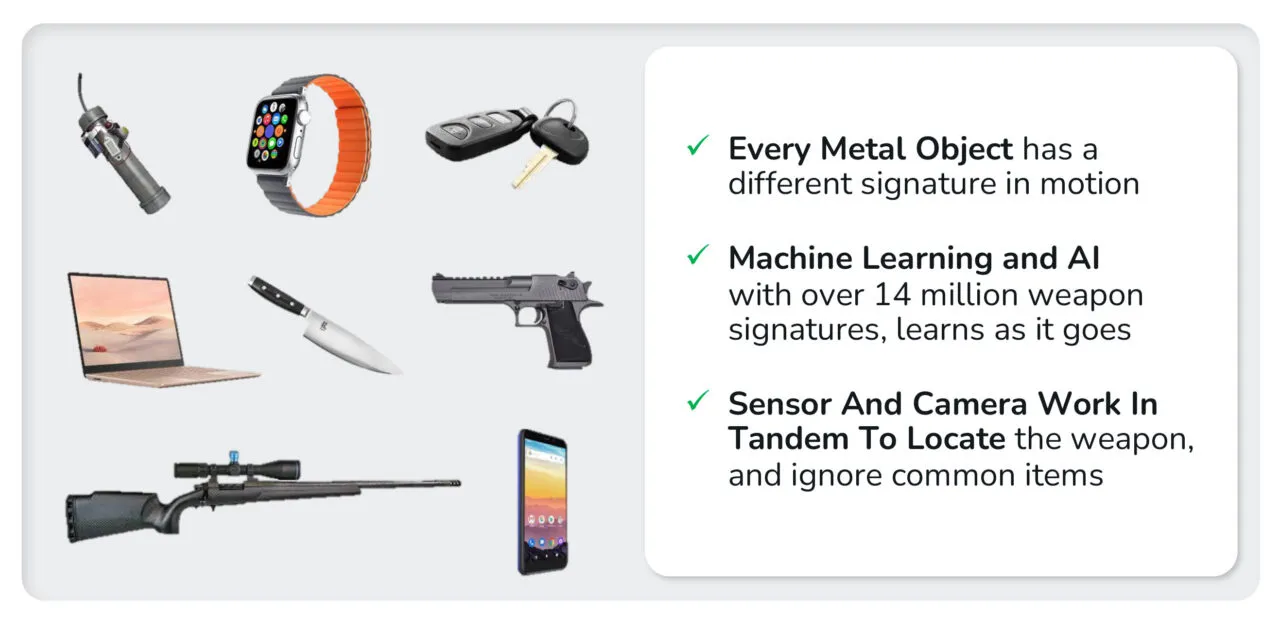
For instance, let’s consider a scenario in a hospital where visitors and staff carry various personal items and medical devices. Traditional security systems might incorrectly identify these as threats, causing unnecessary alarm and disrupting the hospital’s calm environment. SafePointe’s advanced system effectively filters out most innocuous items, helping identify and flag real threats. This ability not only maintains an atmosphere conducive to healing but also allows security personnel to focus their attention on legitimate concerns, enhancing overall safety in the facility.
Key Feature #6: Rapid Screening Process – Up to 20 Times Faster than Traditional Methods, Optimizing Patient and Visitor Flow
SafePointe’s rapid screening process is not only about efficiency but also plays a crucial role in healthcare environments where timely care can be lifesaving. Traditional metal detectors, processing 300 to 400 individuals per hour, can lead to delays.
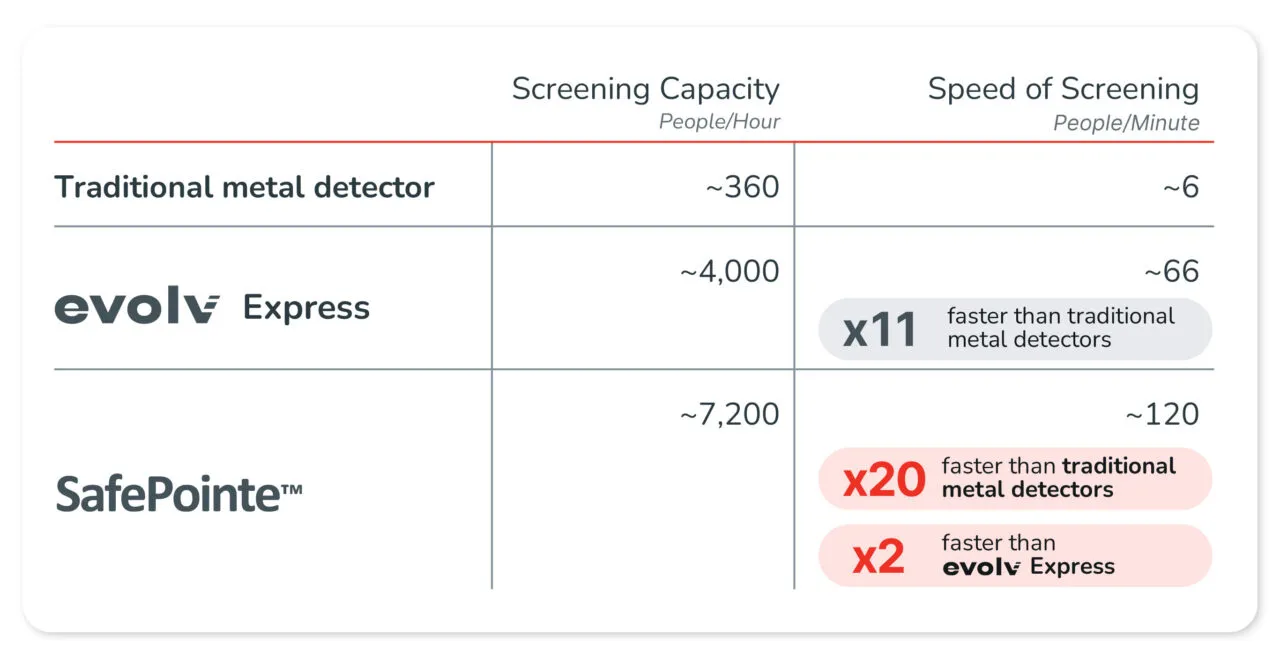
SafePointe can screen up to 7,200 patrons per hour per lane, which is over 20 times faster than traditional metal detectors and nearly twice as fast as some competitors. This speed is vital in medical emergencies, where every second counts. By minimizing wait times at security checkpoints, SafePointe ensures that patients in need of urgent care can access medical attention more rapidly, potentially saving lives.
This rapid process benefits not only patients but also healthcare staff. It streamlines visitor flow, allowing healthcare professionals to focus on providing care without the added concern of security bottlenecks. In critical healthcare situations, SafePointe’s superior throughput capacity is more than a convenience; it’s a component of effective and timely patient care, underlining its importance in healthcare security.
Key Feature #7: Organized, Video-Enhanced Alerts Facilitate Effective Investigative Follow-Up in Healthcare Scenarios
SafePointe’s system addresses workplace violence in healthcare with its organized, video-enhanced alerts, providing effective investigative follow-up. Differing from traditional metal detectors lacking video capabilities, SafePointe swiftly delivers classified alerts with relevant video footage to the security team within just six to ten seconds after detecting a potential threat. This rapid response is crucial in healthcare settings where timely and accurate security intervention can be critical.

The system’s approach extends beyond basic weapons detection, offering actionable intelligence almost instantly. Utilizing a ‘human in the loop’ method, SafePointe’s analysts review and categorize the nature of the threat, equipping security teams with detailed insights for prioritized and informed responses. This is particularly valuable in the dynamic environment of a healthcare facility, where discerning genuine threats swiftly is vital.
Moreover, the captured video recordings are integral for understanding incidents in real-time, enabling security personnel to make well-informed decisions. This visual evidence is not only crucial for immediate security measures but also serves as essential documentation for subsequent investigations or legal proceedings. In healthcare scenarios, where every second matters, SafePointe’s organized and video-enhanced alerts system ensures a rapid, efficient, and well-informed security response.
Key Feature #8: System Operates Apart from Your Main Network
While the SP system can integrate with your VMS or other security platforms, it is purposely designed to stay off your network, making it especially favored by IT professionals. Our AI system and sensors are connected to and pass alerts through the Cloud, through a web portal interface or a Smart Phone App.
A Checklist for Assessing a Weapons Detection System
- Does the system offer covert weapons detection that ensures public safety without disrupting the patient environment or hospital operations?
- What are the staffing requirements for the system? Does it support efficient deployment of security resources while maintaining stringent healthcare safety standards?
- Is the Total Cost of Ownership (TCO) aligned with the financial constraints of your healthcare facility? Are there flexible payment options to better suit your needs?
- Are the sensors passive and free from health risks, ensuring the safety of patients with medical devices such as implants and pacemakers?
- Has the system demonstrated high accuracy with minimal false positives, crucial for maintaining a calm and secure healthcare environment?
- Can the system efficiently manage high foot traffic typical of healthcare settings without causing congestion or delays, especially in emergencies?
Does the system provide real-time, video-enhanced alerts for effective investigative follow-up, crucial in healthcare scenarios for swift and informed security responses?
Ready to Try the Best Weapons Detection System?
In an era where workplace violence in healthcare is top of mind, SafePointe emerges as a leading choice for facilities seeking a blend of advanced threat detection, operational efficiency, and patient-centric design. Its specialized technology ensures safety in high-traffic healthcare settings, offering a solution that is both effective and sensitive to the unique environment of healthcare facilities. SafePointe stands as an essential tool in the fight against workplace violence in healthcare, providing a secure yet patient-friendly environment.

